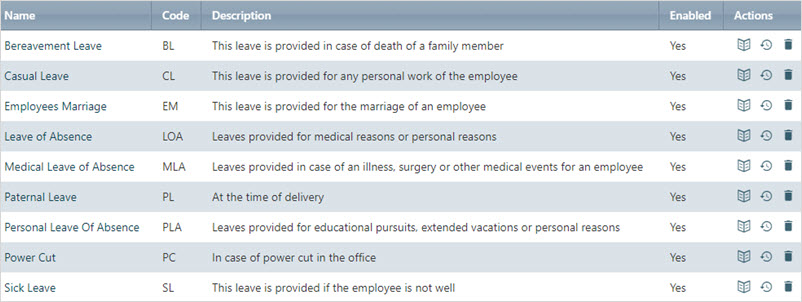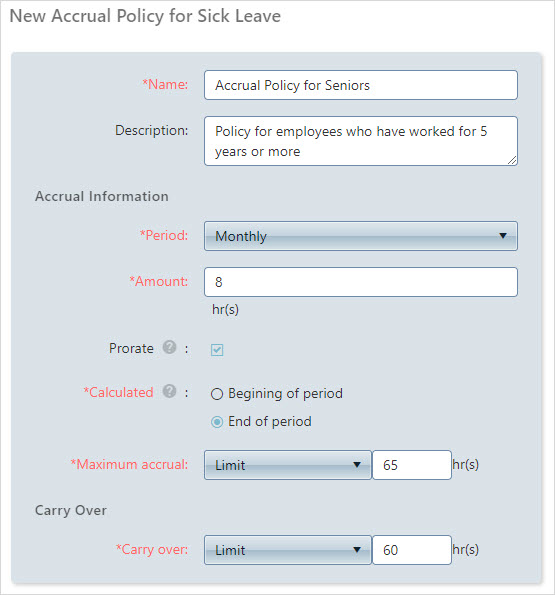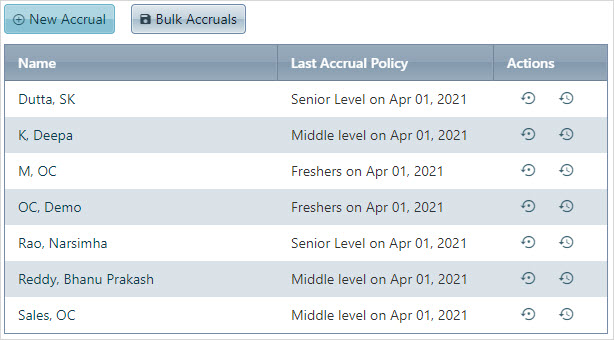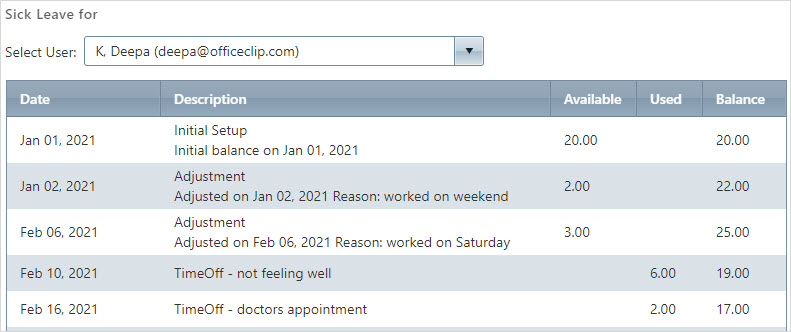All companies have a paid time off policy that includes vacation days, sick days, personal reasons, and casual purposes. In addition, each employee is given a specific amount of paid time off based on their years of service. However, there are times when these leaves are not taken and are accrued.
This article will delve deeper into accruals and how they work.
What is Accrued Time Off?

Accruals definition, according to Wikipedia: Accrual of something is, in finance, the adding together of interest or different investments over a period of time.
In Paid Time Off, accrued time offs are leaves earned but not used. For example:
- An employee earns 1.5 hours of leave for every 25 worked hours.
- If the employee has worked for 400 hours, they earn 24 hours (400/25 x 1.5) of paid time off.
- If the employee uses 12 hours of time off, then the other 12 hours of unused leaves are accrued time offs.
These accruals are either carried off for the next year or reimbursed in the form of cash by the employer at the end of the year.
Accrued time offs are used as a reward by employers for their employees. More often, senior employees in the organization enjoy more accrued time offs. Here is an example of how OfficeClip offers the accrued time offs to their employees depending upon the years of their service:
We have different policies for different leave categories. Let’s take a look at the Vacation leave accrual policy:
- Vacation leave for Freshers(first year after joining date) will be provided with 0.75 days/month. Unused leaves will carry over to the next calendar year.
- Vacation leave for Middle-level(2nd and 3rd year) will be provided with 1.25 days/month. Unused leaves will carry over to the next calendar year.
- Vacation leave for Senior-level(for 3+ years) will be provided with 1.75 days/month. Unused leaves will carry over to the next calendar year.
Calculation of Accrued Time off:
Let’s say an employee earns 1.5 hours of paid time off for every 20 hours worked. He gets $10 for every hour worked. By the end of the year, the employee has worked for a total of 4000 hours.
The number of time offs the employee has earned (4000/20 x 1.5) = 300 hours. Out of these 300 hours of paid time off, the employee has used 170 hours, and the rest 130 hours are accrued.
The employee’s hourly rate is $10, and accrued time offs are 130 hours.
So the amount they earn is (130 hours x $10) = $1300 before paying taxes.
But every company has different rules for the calculation of accruals. It depends on:
- Accrual Period: This period can be daily, weekly, monthly, or yearly.
- Amount of accruals: This amount varies for every employee depending on the years of service in the organization.
- Prorate: The accrual amount can be prorated if the employee is terminated or leaves the company in the middle of the year.
- Calculation period: The company decides the calculation period. It may be the beginning of the year, end of the year, or the employee anniversary date.
- Maximum accruals: The company can also set a limit on accruals. If the accruals cross a certain limit, the time offs may lapse.
- Carry-over: The company also sets the accrual carry-over limit for next year. Accruals can be encashed or carried over to the next year but within the limit set.
How Accrued Time Off works?
Let’s take a look at some scenarios on how accrued time off works:
Example 1:
Henry joined the company on Jan 15, 2021, and is allocated 2.5 days of sick leave every month that expires at the end of the year.
If we assume the following:
- Henry has not claimed any sick leave so far
- Leave is accrued at the beginning of every month
- It is prorated
On July 1, 2021, Henry will have:
1.25 days of leave accrued for January(from 15th Jan – 31st Jan) + 2.5 days of leave from February to July = 16.25 days (16.25 days x 8 hours = 130 hours).
16.25 days accrued totaling 130 hours.
Example 2:
Sophia gets vacation leave of 1.5 days every month and only 6 days of such leave can be rolled over to the next year. If we assume that:
- Sophia already had 3 days of vacation rolled over from last year
- Leave is accrued at the end of the month
- Sophia has already taken 6 days of vacation this year
On July 1, 2021, Sophia will have:
3 days (vacation rolled over from last year) + 9 days (1.5 days for every month from January to June) – 6 days (vacation taken this year) = 6 days of vacation accrued.
Example 3:
- Noah gets 12 personal days every year starting January 1, 2021, 1 personal day of leave per month.
- Days accrue on the first of each month.
- Noah has used up 4 vacation days in the first six months(January – June).
- On July 1, 2021, Noah would have 2 vacation days accrued (6 total vacation days with 4 used up).
- Noah got a promotion after six months, which makes him eligible for 6 additional personal days every year.
- Now Noah’s personal days leave will be 18 per year, i.e. 1.5 days per month.
- Assuming Noah does not take any vacation in July, on August 1, 2021, his vacation days accrue to:
5 days (2 previous accrued days + 1.5 days in July + 1.5 days in August with the new accrual after his promotion).
How OfficeClip Time Off module will help to track employees’ time offs?
In OfficeClip, the Time Off module can create different kinds of leave categories, and for each leave category, different accrual policies can be set.
Leave Categories:

This module can keep track of various time-offs your employees use and save as per company policy.
Accrual Policies:
You can create various accrual policies for employees depending on their years of service and designation. Your employees may belong to various accrual groups. This means your senior employees may be able to acquire more time offs than your new hires. There are also various types of time-off and accruals such as jury duty, family emergency, sabbaticals, etc.

Setting Employees for Accrual policy:
Set Accrual policy for each employee, and let the system calculate the amount of time remaining in hours.

View Time-Off balances:
Employees can also check their balance and used time-offs in the history of each leave category. Then, whenever an employee requests time-off, the system calculates the remaining amount and warns the employee if they have used up all the hours in a particular category.

The time-Off module is a part of the OfficeClip Web Timesheet. The Time-off module is available at no cost with the Timekeeping software. Let me know if you have any questions.
Also, see:
- Accruals: A Comprehensive Guide to Understanding Time Off
- How to design an effective Accrual policy for your business?
